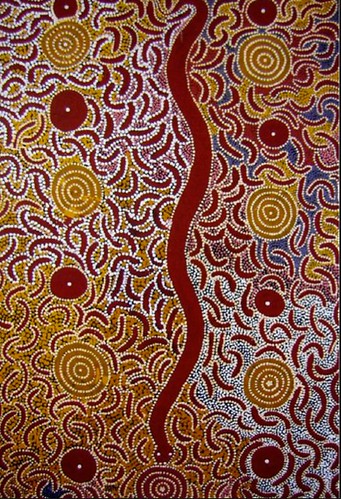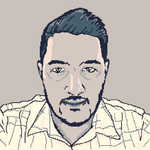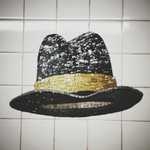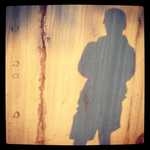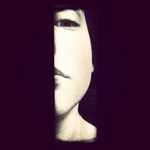It’s that time of year again. This pic was taken in November, a year ago, just as summer began to awaken the local reptile population. It’s an Eastern Brown, who was chasing a lizard down our garden path, incidentally heading towards my daughter and me as we stood by the house watching the little drama unfold about three meters away. Needless to say, we fairly swiftly made our way into the house and closed the door behind us. Thirty years ago, the last time I saw a Brown snake, I remember, perhaps in an excess of caution, actually locking the door behind me. This time, after much nervous laughter, we returned to watch the majestic beast as he glided back toward the forest.
The Brown is in fact pretty dangerous. One 14,000th of an ounce can kill a human. Most lists of deadly snakes put the Brown in the world’s top ten, with more toxic venom than, say, Indian Cobras, African Mambas, or Malayan Kraits In truth, lots of Australia’s snakes make the world’s most deadly list. Locally, we also have the Tiger, Copperhead, Death Adder and Red-bellied Black, all of which are far more deadly than the Rattler of North American fame. Of course, the most venomous is not necessarily the most dangerous. Browns can be aggressive and strike repeatedly, but sometimes they withold their venom.
Snakes are of great cultural significance to Australian Aboriginal people. Especially the Rainbow Snake which figures prominently in many dreamtime stories. But other snakes rate a mention as well. I recently read a snake story recounted by A.W. Reed, well known 20th century collector of indigenous stories. While I wouldn’t guarantee the authenticity of most white fella retellings of these stories, Reed’s efforts seem relatively unembellished by European flourish.
The Dogs That Were Snakes
“Bahloo, the Moon God, waited until everyone was asleep before taking his three dogs for a walk. Bahloo was a friendly fellow, greatly liked by all the blackfellas; but the same could not be said of his dogs. That was why he usually chose the hours of darkness to exercise them.
Sometimes Bahloo shows himself in the daytime. We have all seen his round, shining face sailing across the afternoon sky. It was on one such day that Bahloo was leading his dogs through the scrub when he came to a broad stream. A party of men was camped on the bank.
‘A very pleasant day,’ Bahloo observed. They all smiled when they saw his round faceplate met, Bahloo,’ they shouted. ‘Why have you come here?’
‘I am taking my dogs for a walk, but now I want to cross to the other side of the river. Will you carry them across for me?’
‘No,’ they cried in unison. ‘No, we will not touch your dogs, Bahloo.’
‘Why is that?’ asked the Moon.
No one answered him.
‘Oh, come! If you will not help me, you must tell me why.’
One, braver than the others, spoke for all of them.
‘Bahloo, we all admire you. We would do anything for you—anything except come near your dogs. They do not harm you, but if we touched them they would kill us.’
Bahloo was annoyed.
‘I have made a simple request,’ he said, ‘and you have refused it. Look!’
He picked a piece of bark from the trunk of a tree and threw it in the river. It sank, and then bobbed up to the surface.
‘You have seen the bark? If you do as I ask you, you will be like that piece of bark when you die. You will come back to life on earth again, just as I die and live again in my home in the sky. But if you disobey—watch again!’
He threw a stone in the water. There was no need for him to say any more, for his meaning was clear to everyone.
‘Oh, Bahloo, we love you, and we fear you, but we fear your dogs even more. They are not really dogs. They are snakes—the tiger snake, the death adder, and the brown snake. Each one has poison fangs—we dare not touch them.’
‘Then when you die you will remain dead. Your bodies will lose their flesh, and in the end your bones will crumble into dust.’
With these words ringing in their ears, he picked up his snakes, which he called his dogs, wrapped them round his neck with their tails drooping over his shoulders and coiled round his arms, and waded through the water.
After that day Bahloo never talked with the people of earth again, but vindictively sent his ‘dogs’ to plague them. Wherever they were, men killed them, but it was no use, for Bahloo was always watching, sending others to remind them of his dreadful words about death.”
A.W. Reed, Aboriginal Fables & Legendary Tales (Aboriginal Library)
Filed Under
Other moments in Aireys Inlet
-
Burning, poem, Books
Burning the Books
in Aireys Inlet, Australia -
Today's Sunrise, poem
Beginning or End?
in Aireys Inlet, Australia -
Verses for Emlyn, Grandfathers, family fun
Grandad Wade
in Aireys Inlet, Australia -
Verses for Emlyn, Roses, flowers
Beauty
in Aireys Inlet, Australia -
The Small Things, Depression
Small blessings #4: Just a touch of rose.
in Aireys Inlet, Australia -
Verses for Emlyn, birds, bird bath
Seven
in Aireys Inlet, Australia -
Atheism, Today's Sunrise
Glory
in Aireys Inlet, Australia -
Today's Sunrise, Today's Coffee, health
Morning Cuppa
in Aireys Inlet, Australia -
Verses for Emlyn, kangaroo, wildlife
Alert
in Aireys Inlet, Australia




